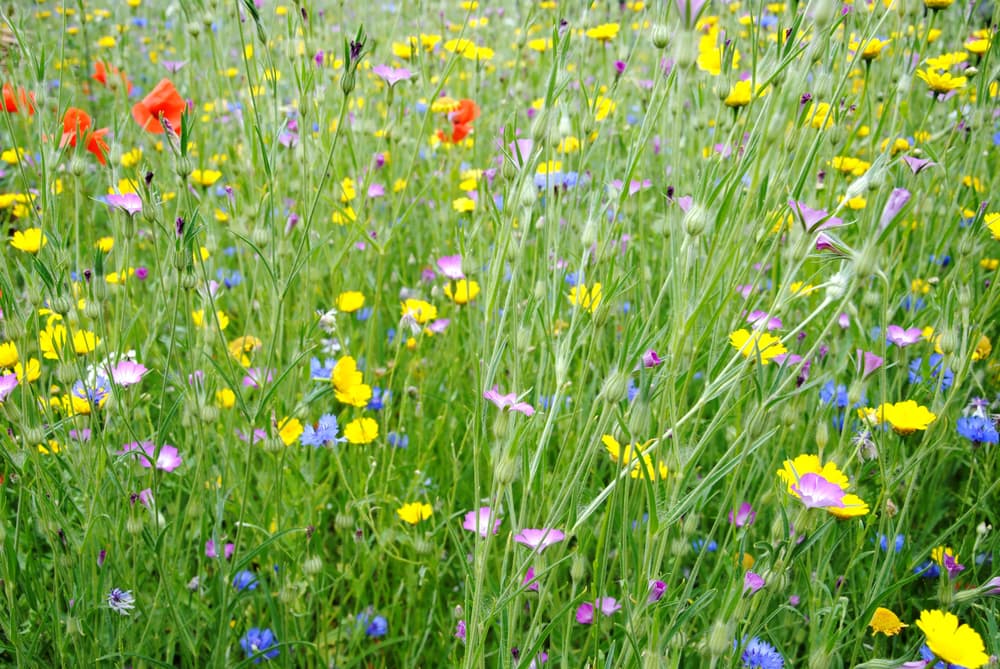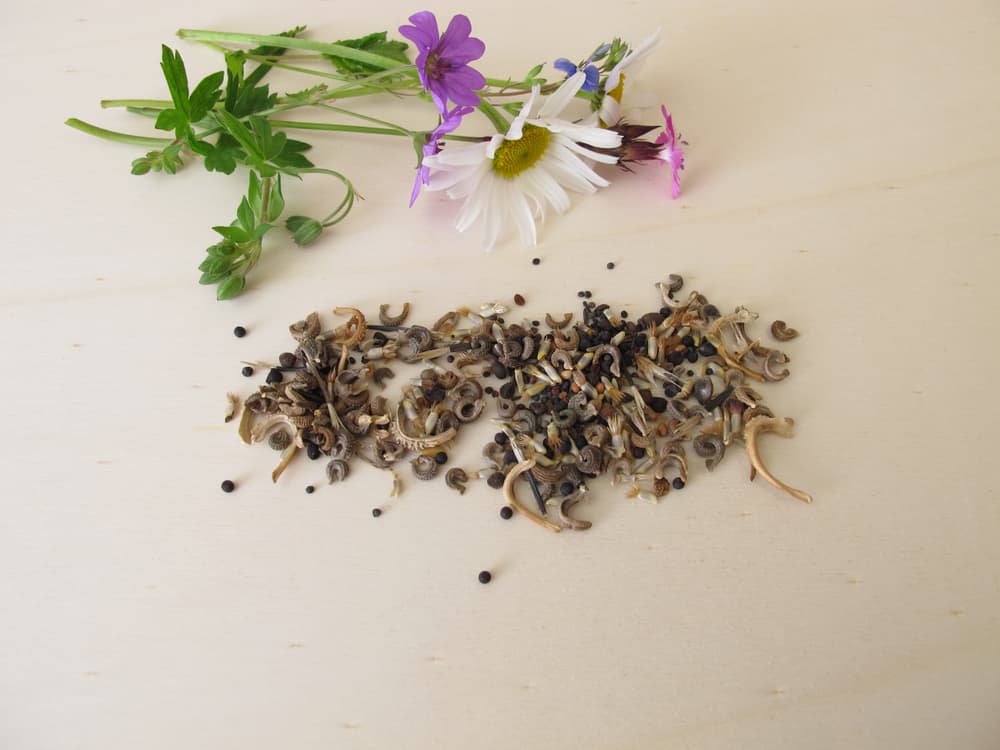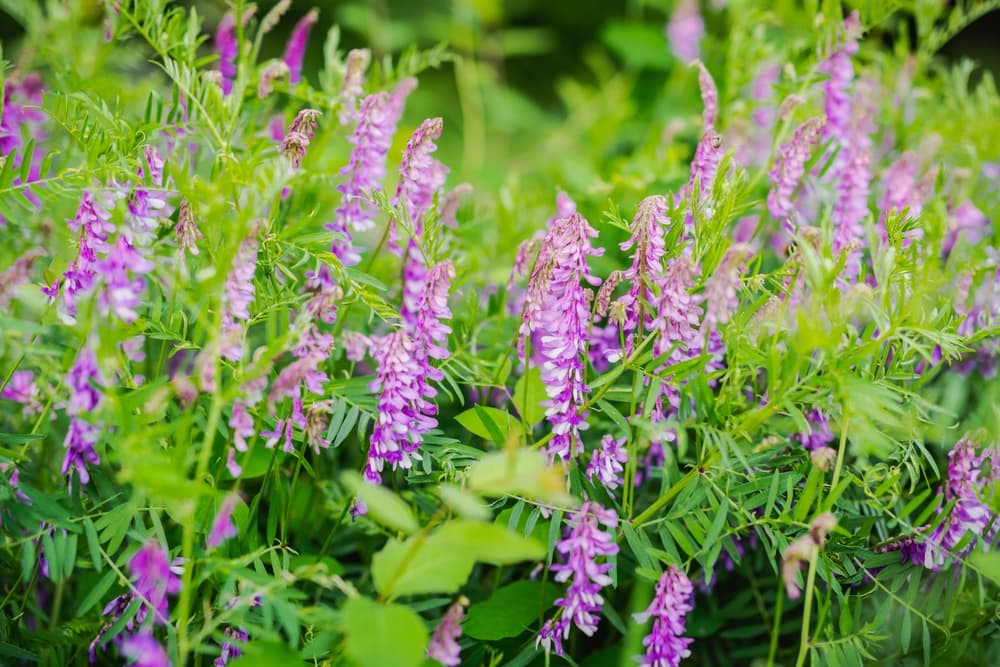Create Your Own Small Meadow Garden In Just 5 Steps (Annual Or Perennial Options)


Elizabeth is a Permaculture Garden Designer, Sustainability Consultant and Professional Writer, working as an advocate for positive change. She graduated from the University of St. Andrews with an MA in English and Philosophy and obtained a Diploma in Applied Permaculture Design from the Permaculture Association.
Reviewed By COLIN SKELLY

Colin is a Horticulturist and Horticultural Consultant with experience in a range of practical and managerial roles across heritage, commercial and public horticulture. He holds the Royal Horticultural Society’s Master of Horticulture award and has a particular interest in horticultural ecology and naturalistic planting for habitat and climate resilience.
Contributions From THE 3 GROWBAGS

What started as a blog turned into a huge project and an online shop for sisters Elaine, Caroline and Laura, who make up The 3 Growbags. They frequently document their journey and have made appearances at several RHS shows. All three are full members of the Garden Media Guild.
Creating a small meadow garden is a great way to create a beautiful and wildlife-friendly space.
Let’s take a look at the benefits of creating this type of planting scheme in more depth.
And then, how you should go about creating one where you live.
Why Create A Small Meadow Garden?

Meadow grasslands are unfortunately an endangered habitat here in the UK, and in many other parts of the world.1O’Malley, T. (2022, May 11). Wildflower favourites are in danger due to devastation of grasslands and meadows. Discover Wildlife. Retrieved March 17, 2023, from https://www.discoverwildlife.com/news/wildflower-favourites-are-in-danger-due-to-devastation-of-grasslands-and-meadows/
Climate change, land-use changes, farming and other human activity, species losses and a range of other factors mean that meadows are increasingly rare features in our landscapes.2Protecting England’s Meadows |. (n.d.). English Heritage. Retrieved March 17, 2023, from https://www.english-heritage.org.uk/learn/conservation/gardens-and-landscapes/meadow-conservation/
And their biodiversity is also under increasing pressure in a range of different ways.
By making a small native meadow garden at home, you can play a small role in preserving and protecting meadow species, and in halting worrying biodiversity losses.

Here are just some of the reasons why meadow habitats are habitats we should value and take steps to preserve:
- Meadows can be useful carbon sinks – deep-rooted grasses and wildflowers within such systems help store carbon in the soil.3Meadows beat out shrubs when it comes to storing carbon: Six universities are uncovering the dynamics of carbon storage in high-latitude alpine zones. (2017, November 17). Science Daily. Retrieved March 17, 2023, from https://www.sciencedaily.com/releases/2017/11/171123094330.htm
- A meadow garden is far more biodiverse than a boring neat grass lawn. It can turn an area of your garden from a labour intensive ecological wasteland into a productive, thriving ecosystem.4Lawson, C. (2021, May 21). Make a meadow, whatever the scale and the diversity of meadows. The Open University. Retrieved March 17, 2023, from https://www.open.edu/openlearn/nature-environment/environmental-studies/make-meadow-whatever-the-scale-and-the-diversity-meadows
- Small meadow gardens can also be great alternatives to more formal flower beds or borders. Wildflowers found in a meadow can be just as beautiful as more traditional ornamental garden plants.
- Meadow flowers are great for bees and many other pollinators, and also aid a wide range of other wildlife in your garden. And when there is wildlife, your job as a gardener will be easier too, because you will have the help of an army of creatures to help you in organic pest control, fertility, and other jobs in your garden.5Planting for Pollinators: Establishing a Wildflower Meadow from Seed [fact sheet] | 1 Extension. (2021, December 8). University of New Hampshire. Retrieved March 17, 2023, from https://extension.unh.edu/resource/planting-pollinators-establishing-wildflower-meadow-seed-fact-sheet
- Meadows can also be full of many useful edible plants, or plants which are useful to us in a range of other ways.
1) Choose A Meadow Type
If you have decided to create a small meadow garden, the first thing to understand is that there are different types of meadow to consider.
“My favourite plants this month are definitely the colourful mixes of annuals in the Pictorial Meadows trial I am running,” shares Elaine from The 3 Growbags.
“I have followed the work of Nigel Dunnet and the Sheffield School of Gardening for several years now and sowed three different Annual Pictorial Meadow mixes this spring, including Candy, Classic and Kingfisher.
“They’re just hitting their stride now and look fantastic. I’m also looking forward to watching how the seeds they produce will act as a food bank for birds over the winter.”
One of the first decisions you will have to make is whether you will create a perennial meadow, which will come back year after year, or an annual meadow, for which seeds will be sown each year.
Perennial Meadows

Perennial meadows are ideal for a low-maintenance garden.
They are often a good choice when looking to establish a meadow garden where there is an existing lawn.
This type of meadow is unlike many other garden planting schemes in that it actually thrives on neglect.
A less fertile area is ideal, because it allows wildflowers to thrive without being outcompeted by vigorous grasses.
Annual Meadows

Annual meadows can be a good option if you are looking for stunning ornamental displays for a bed or border.
The ground can be somewhat more fertile for this type of meadow, which means this can be a good choice for previously cultivated or fertilised areas.
This type of meadow does take a bit more work.

You’ll need to start with a clear, weeded area, and while some plants may reliably self-seed, you may need to sow seeds each year.
However, such planting schemes offer beautiful displays of colourful annual blooms over 3-4 months of the year.
2) Choose A Site

If you are looking for a site for a small perennial meadow garden, you need often look no further than an existing area of lawn in your garden.
If the lawn has been ‘neglected’ and has not been fertilised, then creating a small meadow garden in place of a standard grass lawn can be the ideal choice.
It is also, of course, possible to create an area of perennial meadow from scratch, working from bare soil. Especially if the area in question is not particularly rich in nutrients.
Most annual meadow plants thrive in areas of full sun, but there are also specific plant mixes that can work well in the dappled shade below trees, or in a partially shaded area.
More free-draining soil conditions generally make it easier to establish such a garden and so you should generally avoid areas with particularly heavy or waterlogged soil.
Deep shade areas also are not ideal for the establishment of a small meadow garden.
3) Choose A Planting Method

Once you have decided whether you would like to create a perennial meadow or an annual meadow, and have decided where to place your new garden area, it is time to decide on a strategy for creating your new small meadow garden.
There are three main choices when it comes to creating this type of garden.
Which one you opt for will depend on a range of factors – such as location, time constraints and budget.
Sow Seeds

The first and cheapest option is to sow seeds, and this is a strategy that can be employed whether you are working from existing lawn cover (for a perennial meadow) or bare soil.
There are a range of different wildflower mixes which can be purchased relatively cheaply for both types of meadow garden.
Seeds should be sown in March or April, or in September.
Early autumn sowing can be best in areas with light, free-draining soils, while spring sowing is typically best for areas with heavier, wetter soils.
Utilise Plug Plants

A slightly more expensive, but quicker option is to buy plug plants.
If you have a good idea already of which plants will thrive in your area then this is one way to achieve a surer and quicker result.
Plug plants can establish a meadow more quickly, and can be placed into a lawn for a perennial meadow scheme, or placed in bare soil to create a new meadow of either type.
Use Meadow Turf

An even easier option is to buy sections of meadow turf, or meadow matting.
These established turfs can be used to create a new meadow in next to no time at all on areas of bare soil.
A number of companies now offer this option for time-short gardeners.
4) Prepare The Area

If you are preparing an area of existing lawn to turn into a small perennial meadow garden, you should begin by raking over the existing grass to uncover areas of bare soil into which seeds can be sown or plug plants can be placed.
If you are creating a new meadow garden on bare soil, then you should rake over the area and remove all weeds.
Then sow, plant or place a wildflower turf over this area.
You should water in well, and then continue to water regularly until the area becomes established.
Remember not to add any fertility, especially if you are trying to establish a perennial garden that will thrive on poor soil.
If the area is relatively fertile and you would like to establish a meadow garden, consider sowing a cover crop of mustard before you begin.
Then pull the mustard when it is in flower, and proceed to sow or plant your meadow area.
5) Select Your Plants

When choosing plants for a small meadow garden, it is important to consider not only which type of meadow you are creating and where you are creating it, but also where you live.
The native meadow plants for the southeast of England, for example, will not be entirely the same as those that will thrive further north.
It is important to think about your soil type, local microclimate and other such factors when choosing the right plants to include in your meadow garden.
One key type of plant to include in a wildflower meadow are plants which are semi-parasitic, and stop grasses from dominating the system.
This is especially important in areas where you want to establish meadow wildflowers in a lawn.
Horticulturist Colin Skelly suggests that “lawns contain a large number of species that exist under the mowing cut height.
“If you just stop regularly mowing a lawned area it will become a meadow if: one – you cut it sparingly annually, and two – you remove the mown plant material after cutting.”
The most widely used lawn meadow plant is yellow rattle (Rhinanthus minor).

Other common plants for perennial meadows include:
Buttercups

Clovers

Cowslips

Daisies

Dandelions

Grasses

Knapweeds

Meadow Crane’s Bill

Trefoils

Vetches

Wild Carrot

Common annual meadow hayfield flowers include:
Chamomile

Corncockle

Cornflowers

Corn Marigold

Poppies

References
- 1O’Malley, T. (2022, May 11). Wildflower favourites are in danger due to devastation of grasslands and meadows. Discover Wildlife. Retrieved March 17, 2023, from https://www.discoverwildlife.com/news/wildflower-favourites-are-in-danger-due-to-devastation-of-grasslands-and-meadows/
- 2Protecting England’s Meadows |. (n.d.). English Heritage. Retrieved March 17, 2023, from https://www.english-heritage.org.uk/learn/conservation/gardens-and-landscapes/meadow-conservation/
- 3Meadows beat out shrubs when it comes to storing carbon: Six universities are uncovering the dynamics of carbon storage in high-latitude alpine zones. (2017, November 17). Science Daily. Retrieved March 17, 2023, from https://www.sciencedaily.com/releases/2017/11/171123094330.htm
- 4Lawson, C. (2021, May 21). Make a meadow, whatever the scale and the diversity of meadows. The Open University. Retrieved March 17, 2023, from https://www.open.edu/openlearn/nature-environment/environmental-studies/make-meadow-whatever-the-scale-and-the-diversity-meadows
- 5Planting for Pollinators: Establishing a Wildflower Meadow from Seed [fact sheet] | 1 Extension. (2021, December 8). University of New Hampshire. Retrieved March 17, 2023, from https://extension.unh.edu/resource/planting-pollinators-establishing-wildflower-meadow-seed-fact-sheet
